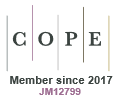Primary health care nurses and their suspicion of child abuse: the importance of relationship-building with families and interdisciplinary networks
Susan Platt 1 * , Shelaine Zambas 1 , Deb Spence 1 , Catherine Cook 1
1 * , Shelaine Zambas 1 , Deb Spence 1 , Catherine Cook 1
1
Abstract
There is a knowledge gap around the experiences of New Zealand (NZ) primary health care (PHC) registered nurses and nurse practitioners when working with children whom they suspect are being abused or neglected.
This study aimed to explore what PHC nurses experience when building and nurturing family and interdisciplinary relationships amidst a suspicion that a child is being abused or neglected.
Using contacts and snowballing to recruit participants, 13 PHC nurses working in the Auckland region were interviewed using semi-structured interviews. Gadamerian hermeneutics guided the analysis, with other philosophers drawn on to deepen the analysis.
Relationship building is precarious due to trust issues, tensions around reporting, and complex power relations. Nurses are central to coordinating interprofessional care.
Building relationships with families, children, and colleagues is fundamental to child protection. It is only by knowing what building and nurturing relationships is like amidst suspicion of child abuse or neglect that those whom nurses work with can understand what this work is like.
Keywords: child abuse, child protection, neglect, nurse, primary health, primary health care, relationships, suspicion of child abuse.
References
1 New Zealand Nurses Organisation. NZNO strategy for nursing 2018-2023; 2018. Available at https://www.nzno.org.nz/Portals/0/Files/Documents/About/NZNO%20Strategy%20for%20Nursing%202018-2023.pdf
2 Nursing Council of New Zealand. The New Zealand nursing workforce: A profile of nurse practitioners, registered nurses and enrolled nurses 2018-2019 Wellington: Te Kaunihera Tapuhi o Aotearoa/Nursing Council of New Zealand; 2019. Available at https://nursingcouncil.org.nz/NCNZ/News-section/News_archive/Council_publishes_Workforce_Report_2018-2019.aspx?WebsiteKey=60ff96d4-9981-4a6f-9e32-8e537523ec0e
3 Dahlbo M, Jakobsson L, Lundqvist P. Keeping the child in focus while supporting the family: Swedish child healthcare nurses experiences of encountering families where child maltreatment is present or suspected. J Child Health Care 2017; 21(1): 103-11.
| Crossref | Google Scholar | PubMed |
4 Nayda R. Australian nurses and child protection: policies and protocols. Collegian 2004; 11(2): 12-6.
| Crossref | Google Scholar |
5 El-Radhi AS. Safeguarding the welfare of children: what is the nurse’s role? Br J Nurs 2015; 24(15): 769-73.
| Crossref | Google Scholar | PubMed |
6 Payne FL, Fernandez DN, Jenner L, et al. Recognition and nursing management of abusive head trauma in children. Br J Nurs 2017; 26(17): 974-81.
| Crossref | Google Scholar | PubMed |
7 Saltmarsh T, Wilson D. Dancing around families: neonatal nurses and their role in child protection. J Clin Nurs 2017; 26(15–16): 2244-55.
| Crossref | Google Scholar | PubMed |
8 Jack SM, Gonzalez A, Marcellus L, et al. Public health nurses’ professional practices to prevent, recognise, and respond to suspected child maltreatment in home visiting: an interpretive descriptive study. Glob Qual Nurs Res 2021; 8: 2333393621993450.
| Crossref | Google Scholar | PubMed |
9 Lines L, Hutton A, Grant J. Constructing a compelling case: nurses’ experiences of communicating abuse and neglect. Child Abuse Rev 2021; 30: 332-46.
| Crossref | Google Scholar |
10 Herendeen PA, Blevins R, Anson E, et al. Barriers to and consequences of mandated reporting of child abuse by nurse practitioners. J Pediatr Health Care 2014; 28(1): e1-7.
| Crossref | Google Scholar | PubMed |
11 Pitz A, Wachtel T. Barriers that inhibit nurses reporting suspected cases of child abuse and neglect. Aust J Adv Nurs 2009; 26(3): 93-100.
| Google Scholar |
12 Sundler AJ, Hedén L, Holmström IK, et al. The patient’s first point of contact (PINPOINT) - protocol of a prospective multicenter study of communication and decision-making during patient assessments by primary care registered nurses. BMC Prim Care 2023; 24: 249.
| Crossref | Google Scholar | PubMed |
13 New Zealand Family Violence Clearinghouse. Economic cost of child abuse 2 billion per year; 2011. Available at https://nzfvc.org.nz/news/economic-cost-child-abuse-2-billion-year
14 Child Matters. Facts about child abuse. n.d. Available at http://www.childmatters.org.nz/55/learn-about-child-abuse/facts
15 Crimes Act. Wellington, NZ. 1961. Available at https://www.legislation.govt.nz/act/public/1961/0043/latest/DLM327382.html
16 Privacy Act. Wellington, NZ. 1993. Available at https://www.legislation.govt.nz/act/public/1993/0028/latest/DLM296639.html
17 Malterud K, Siersma VD, Guassora AD. Sample size in qualitative interview studies: guided by information power. Qual Health Res 2016; 26(13): 1753-60.
| Crossref | Google Scholar | PubMed |
19 Knapp SJ. The ethical phenomenology of Emmanuel Levinas: drawing on phenomenology to explore the central features of family life. J Fam Theory Rev 2015; 7(3): 225-41.
| Crossref | Google Scholar |
20 Carter LJ Am I doing the right thing? Plunket nurses’ experience in making decisions to report suspected child abuse and neglect. Waikato Institute of Technology; 2010. Available at https://researcharchive.wintec.ac.nz/id/eprint/961/1/Lynn%27s_thesis_COMPLETE_doc_DEC_2010.pdf
21 Sundler AJ, Whilson M, Darcy L, et al. Swedish school nurses’ experiences of child abuse. J Sch Nurs 2021; 37(3): 176-84.
| Crossref | Google Scholar | PubMed |
22 Oldland E, Botti M, Hutchinson AM, et al. A framework of nurses’ responsibilities for quality healthcare - Exploration of content validity. Collegian 2020; 27: 150-63.
| Crossref | Google Scholar |
23 Jiménez-Herrera MF, Llauradó-Serra M, Acebedo-Urdiales S, et al. Emotions and feelings in critical and emergency caring situations: a qualitative study. BMC Nurs 2020; 19: 60.
| Crossref | Google Scholar | PubMed |


